Solid state previous year questions CBSE with answers( One mark)
SOLID STATE
These are solid state previous year questions for CBSE .
One Mark Questions:
1.
Which point defect lowers the density of ionic
crystals? (AI. 2000 C)
2.
What is the difference between ferromagnetic and
ferrimagnetic substances? (Delhi 2001 C)
3.
Why does Frenkel defect not change the density
of AgCl crystal? (AL. 2001 C)
4.
What other elememt may be added to silicon to
make electrons available for the conduction of electricity ? (Delhi 2001 C)
5.
What is Curie temperature? (AI. 2002 C)
6.
What is the effect of Frenkel defect on
electrical conductivity of the solid? (AL. 2003 C)
7.
Name one solid in which both Frenkel and
Schottky defects occur .(AI. 2003 C)
8.
What is difference between glass and quartz
though both contain SiO44- units? (Delhi 2003 C)
9.
In an alloy of gold and cadmium, gold
crystallises in cubic structure, occupying the corners only and cadmium fits
into the face centre voids What is the quantitative composition of the
alloy?(Delhi 2003 C)
10.
Which solid is likely to be the best material
for converting sunlight into electricity? (Foreign 2003)
11.
Mention one property which is caused due to the
presence of F centre in a solid (Delhi 2003)
12.
How can a ferromagnetic substance be changed to
paramagnetic one? (AI. 2004 C)
13.
What happens when ferrimagnetic Fe3O4
is heated to 850 K and why? (AI. 2004)
14.
Why are Frenkel defects not found in pure alkali
halides? (Delhi 2004 C)
15.
What is the coordination number of a metal atom
in ccp structure? (Foreign 2004)
16.
Define the terms amorphous . (A.1.2004)
17.
Name a substance which on addition to AgCl
causes cation vacancy in it(Delhi 2004)
18.
What happens when a ferromagnetic substance is
subjected to high temperature? (A.1. 2005 C)
19.
What is nature of crystal defect produced when
sodium chloride is doped with MgCl,?(Delhi 2005 C)
20.
Name an element with which Ge can be doped to
produce an n-type semiconductor(Foreign 2005)
21.
What is the maximum possible coordination number
of an atom in an hcp crystal structure of an element? (Delhi 2005)
22.
Give reasons for the following
Copper is conducting as such while copper
sulphate is conducting only in molten state or in aqueous solution. (A.I. 2006)
23.
What is the effect of Schottky and Frenkel
defects on the density of crystalline solids? (A.I. 2006C)
24.
What makes the crystals of KCl appear sometimes
violet? (A.I. 2006)
25.
Name the crystal defect which lowers the density
of an ionic crystal. (Delhi 2006)
26.
Name an element with which silicon can be doped
to give p type semiconductor (Foreign 2006)
27.
Name the non-stoichiometric point defect
responsible for colour in alkali halides. (AI 2006)
28.
A cubic solid is made of two elements X and Y. Atoms Y
are at the corners of the body-centre. What is the formula of the compound? (Delhi 2006)
29.
i)What is the number of atoms per unit cell in a
body-centred cubic structure (Delhi 2007)
ii)What is the total number of atoms per
unit cell in a face centered cubic structure ? (Al. 2008)
30.
What is the coordination number of each type of
ions in a rock-salt type crystal structure (Delhi 2008)
31.
What are F-centres? (A.I. 2008)
32.
Name an element with which silicon should be
doped to give n-type of semiconductor (Delhi 2008)
33.
What type of alignment in crystals makes them
ferromagnetic? (Foreign 2008)
34.
"Stability of a crystal is related to the
magnitude of its melting point". How?(A.I. 2009)
35.
What is the percentage efficiency of packing in
the case of simple cubic lattice? (A.I.2009)
36.
How do metallic and ionic substances differ in
conducting electricity? (A.I.2009)
37.
Which point defect in crystals does not alter
the density of the relevant solid? (Delhi 2009)
38.
Give an example of an ionic compound which shows
Frenkel defect. (A.I.2010)
39.
What type of interactions hold the molecules
together in a polar molecular solid. (A.I.2010)
40.
Write a feature which will distinguish a
metallic solid from an ionic acid. (Delhi 2010)
41.
Crystalline solids are anisotropic in nature'.
What does this statement mean? (Delhi 2011)
42.
What is the formula of a compound in which the
element Y forms CCP lattice and atoms of X occupy 1/3 of tetrahedral voids? (Delhi 2015)
43.
Zno turns yellow on heating. Why? (AI 2016)
44.
What type of magnetism is shown by a substance
if magnetic moments of domains are arranged in the same direction ? (Delhi
2016)
HINTS & SOLUTIONS
PHYSICAL CHEMISTRY
SOLID STATE
One Mark Questions
1.
Schottky defect
2.
Ferromagnetic: Substances which shows permanent
magnetism even in the absence of magnetic field are called ferromagnetic
substance eg. Fe, Ni,Co, Cro2
Ferrimagnetic Substance: Substances which
are expected to posses large magnetism on the basis of the magnetic moment of
the domain but actually have small net magnetic moment are called ferromagnetic
substances eg. Fe3O4
3.
Because in Frenkel defect ion dislocate and
occupy the interstitial site
4.
Group-13 element (Boron) and group 15 element
(P) may be added
5.
Curie temperature is the temperature at which
certain material lose their permanent magnetic properties, to be replaced by
induces magnetism
6.
Solid show partial conductivity due to presence
of holes
7.
Silver bromide (AgBr)
8.
Glass is amorphous solid but quartz is
crystalline solid
9.
No. of gold atom = 8 x 1/8 = 1 atm
No
of cadmium atom = 6x12 = 3
So the quantitative composition is – 1:3
10.
Amorphous silica
11.
Due to F-centre solid show colour e.g. NaCl
shows yellow colour
12.
By changing the temperature
13.
It becomes paramagnetic
14.
Because less differences between size of cation
& anion
15.
12
16.
When there is no regular arrangement of
particles irregular shapes or short range order
17.
SrCl2
18.
Its becomes paramagnetic (due randomization of
high spin)
19.
Cation vacancies
20.
Arsenic
21.
12.
22. Copper has free electron. It is metallic conductor but copper sulphate contains ions and is electrolytic conductor
23. In Schottky defect: Density decreases. In Frenkel defect: Density remains constant
22. Copper has free electron. It is metallic conductor but copper sulphate contains ions and is electrolytic conductor
23. In Schottky defect: Density decreases. In Frenkel defect: Density remains constant
24.
Due to F-centre
25.
Schottky defect
26.
Gallium
27.
metal excess defect (F-centre)
28.
No. of atom at (x-atom) corner = 8x1/8 = 1
No.
of atom of Y' at body centre = 1
Formula = XY
29.
Two (at corner = 1, at body=1 ,at body = 6x1/2=3)
Four (at comer = 8x 1/8 =1 , at body =6x1/2=3)
30.
6:6 or 6
31.
F-centre are the sites from where the anion are
missing and electron releases by metal occupy the vacant site.
33.
The magnetic dipole are parallel to one another
↑ ↑
↑ ↑
|
34.
Crystalline solid has sharp melting point which
depends on the packing of particles
35.
52.4%
36.
A.)Metallic
substances conduct electricity by free electron
b) ionic substances conduct electricity due
to free ion
37.
Frenkel defect
38.
AgBr
39.
Dipole-Dipole Interaction
40.
Metallic solid hard and ductile but ionic solid hard
are brittle.
Metallic solids
|
Ionic Solids
|
(1) Metallic solids are hard.
|
(1) ionic solids are brittle
|
(2) Metallic Solids are
conductors of electricity in solid state as well as in molten state
|
(2) ionic Solids are
insulators in solid State but conductors in molten state and in aqueous
solutions
|
41.
The property of crystalline solid is not same in
anyone direction anisotropic means same
42.
Number of tetrahedral voids fomed 2 x number of atoms of element Y
Number of atoms of element Y in the ccp unit cell =4
Number of tetrahedral voids formed = 2x4=8
Number of tetrahedral voids occupied by atoms of X =1/3x8= 8/3
Ratio of the number of atoms of X and Y = 8/3 : 4 = 2:3
Hence, the formula of the compound is X2Y3
Number of atoms of element Y in the ccp unit cell =4
Number of tetrahedral voids formed = 2x4=8
Number of tetrahedral voids occupied by atoms of X =1/3x8= 8/3
Ratio of the number of atoms of X and Y = 8/3 : 4 = 2:3
Hence, the formula of the compound is X2Y3
43.
Zno →heating Zn+2 + 2e-
+1/2 O2
Zinc oxide is white in colour at room temp.
On heating it loses oxygen and turns yellow.
44.
It is called ferromagnetism
Check out : Electrostatics Five mark questions with answers for CBSE Class 12 (previous year )
Please Share and Help Others
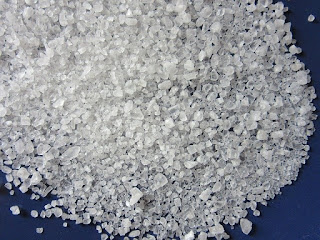
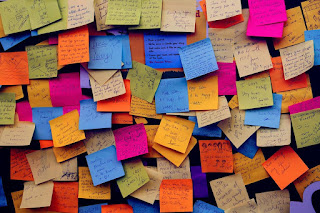


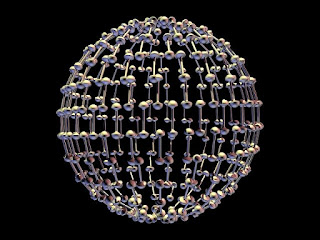


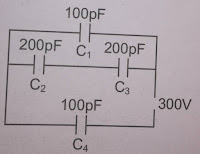

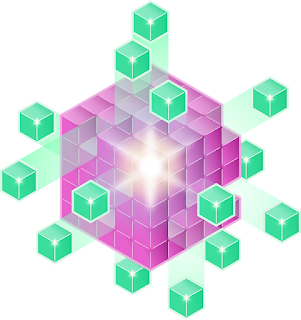
Comments
Post a Comment
Feel free to ask if you have any queries and if want any information . I feel happy to interact with you all and help you .